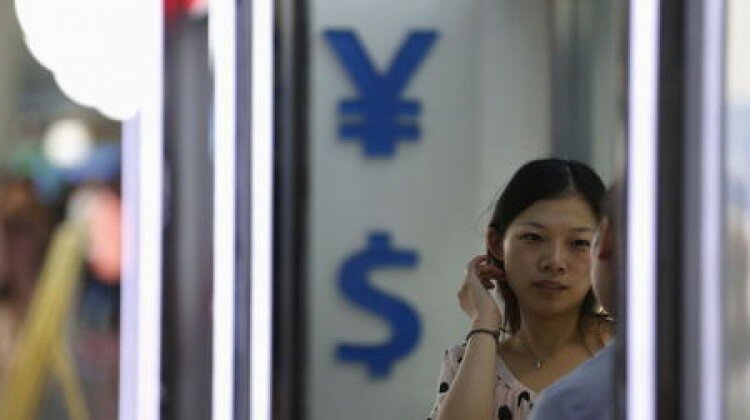
Central bank officials said on Thursday they were confident of keeping the yuan stable at a rational value, promising “effective management” to deal with any extreme volatility.
The PBOC also said on Thursday that it would monitor “abnormal” cross-border flows after the devaluation raised fears that investors would seek to pull capital out of in anticipation of further falls in the currency.
On Tuesday, China devalued the currency by the most in two decades to cushion its exports.
The spot rate is now allowed to trade within a range of 2% above or below the official fixing on any given day, and had been consistently trading over 1% weaker than the midpoint since March.
Instead of the bank exclusively determining the fixing rate, it announced that market participants, using the previous days closing level, would now play a greater role in determining the yuan’s initial trading level.
It has since lowered the central rate twice more, and the week’s combined drop is the biggest since China set up its modern foreign exchange system in 1994, when it devalued the yuan by 33 percent at a stroke.
The bank can not intervene with this, but focuses more on improving the exchange rate formation mechanism, said Yi, who now serves as deputy governor of the PBOC and director of the State Administration of Foreign Exchange.
He added that Beijing’s decision to lower the yuan’s value coincided with the worldwide Monetary Fund’s (IMF) ongoing consideration of including the currency into its so-called basket of supplementary foreign exchange reserve assets.
However, the central bank’s move is probably not significant enough to make much difference to either exporters or buyers of Chinese exports.
The Australian dollar fell one US cent on Tuesday and Wednesday after the yuan’s first two large devaluations.
Duke University business professor Campbell Harvey says China wants the yuan to eventually become a “reserve” currency like the dollar and the euro.
China targets this year’s economic growth rate at 7 percent, marking the slowest expansion in 25 years.
Tan said that other regional currencies, in particular the South Korea won and the Singapore dollar, also face similar downside risks.
“The 2 or 3 percent devaluation of the yuan [against the U.S. dollar] is completely meaningless”, Faber said. The US dollar has also lost ground as the uncertainty and evident slowdown in China could slow the momentum towards a US rate increase and push it back to 2016.